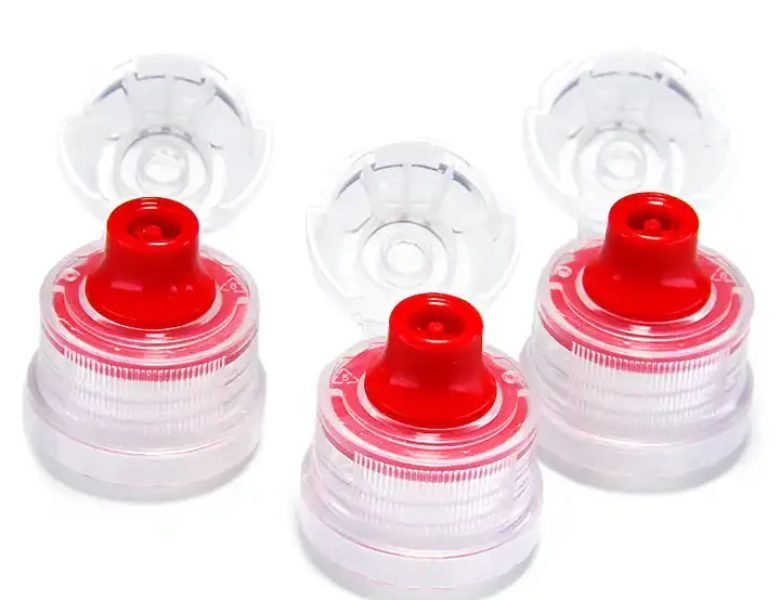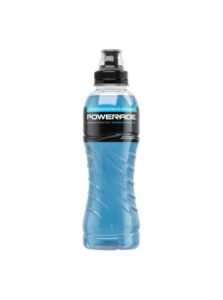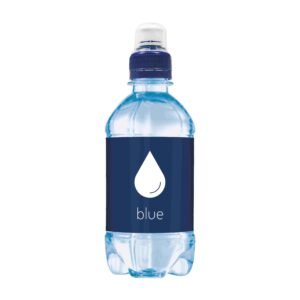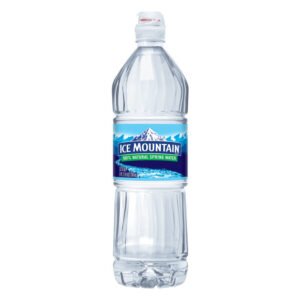

Jakie rodzaje butelek na wodę Sports Cap są zgodne z wymogami FDA dotyczącymi kontaktu z żywnością?
Dlaczego zgodność z FDA ma znaczenie dla każdej butelki na wodę Sports Cap?
Czy zdarzyło Ci się kiedyś chwycić butelkę wody z nakrętką sportową podczas przerwy na siłowni lub wędrówki? To proste nakładka typu flip top nie chodzi tylko o wygodę. Muszą one również spełniać surowe normy bezpieczeństwa. W Stanach Zjednoczonych FDA określa jasne wytyczne mające na celu ochronę konsumentów korzystających z butelek z zamknięciem sportowym. Zasady te pomagają potwierdzić, czy butelka na wodę z nakrętką sportową jest bezpieczna w kontakcie z żywnością i napojami. Ignorowanie tych standardów? Może to oznaczać narażenie na szkodliwe substancje chemiczne przedostające się do napoju.
Przyjrzyjmy się zatem, co sprawia, że sportowa butelka na wodę jest zgodna z FDA i dlaczego warto się tym przejmować.
Co to jest butelka na wodę Sports Cap zgodna z FDA?
Zrozumienie zatwierdzonych przez FDA zakrętek do butelek i komponentów
A sportowa butelka na wodę jest zgodny z wymogami FDA, gdy wszystkie materiały mające kontakt z płynem wewnątrz spełniają wymogi bezpieczeństwa żywności. Obejmuje to zakrętkę typu flip top, sportową wkładkę do butelki na wodę oraz wszelkie zawory lub uszczelki. Materiały nie mogą przenosić niebezpiecznych substancji do napoju. To jest krótka wersja. Dłuższa wersja? Oznacza to rygorystyczne testy polimerów, barwników, dodatków i nie tylko.
Niezależnie od tego, czy popijasz wodę butelkowaną z nakrętką sportową podczas biegu, czy uzupełniasz butelkę na siłowni, nakrętki do butelek, którym ufają użytkownicy barów sportowych, muszą spełniać te warunki FDA.
Materiały w zatwierdzonych przez FDA zakrętkach do butelek: Na co zwrócić uwagę
Polipropylen (PP) i polietylen o wysokiej gęstości (HDPE)
Większość sportowych butelek na wodę wykorzystuje nakrętki z PP lub HDPE. Tworzywa te są odporne na ciepło i chemikalia. Zatwierdzone przez FDA kapsle do butelek Zbudowane z tych materiałów rzadko stwarzają ryzyko, co czyni je najlepszym wyborem do projektowania sportowych nakrętek na butelki z wodą.
Silikonowe zawory i uszczelki
Miękki, elastyczny silikon jest często używany wewnątrz zakrętek typu flip top lub butelek sportowych typu squeeze cap. Ale nie każdy silikon. Tylko silikon medyczny lub spożywczy nadaje się do kontaktu z żywnością. Niezwykle ważne jest, aby każdy silikon wewnątrz sportowej nasadki na butelkę z wodą przeszedł testy migracji i był zgodny z przepisami FDA CFR Title 21.
Zgodność z przepisami i wzornictwo nakrętek Flip Top: Więcej niż tylko wygoda
Funkcjonalna konstrukcja spełniająca wymogi regulacyjne
Nakładki z klapką sprawiają, że popijanie jedną ręką nie wymaga wysiłku. Mechaniczne cechy tego małego zawiasu lub przycisku nie powinny jednak zagrażać bezpieczeństwu. Sprężynowe klapki, często spotykane w zakrętkach butelek sportowych marek barowych, muszą być wykonane ze stali nierdzewnej lub powlekanego metalu, który nie koroduje i nie zanieczyszcza napoju.
Aby butelka z nakrętką sportową mogła zostać zakwalifikowana jako zgodna z wymogami FDA, każda część zespołu nakrętki musi spełniać testy bezpieczeństwa żywności. Nie ma wyjątków.
Referencje:
1. Ogranicz bałagan związany z ketchupem: Zwycięstwo dzięki technologii inteligentnego zaworu do butelek z ketchupem zapewniającej doskonałe dozowanie produktu
2. Pożegnaj się z wyciekami: Jak silikonowy zawór szczelinowy poprawia precyzję i kontrolę?
3. 5 najlepszych napojów fitness w 2025 roku i wybrane przez nich nakrętki do butelek
4. Koniec z bałaganem: Jak silikonowe zawory dozujące rozwiązują problemy z wyciekami i dozowaniem w opakowaniach płynów?
5. Zakrętki do butelek na wodę: Ponowne użycie vs. jednorazowe - co jest lepsze dla środowiska?
Jak sprawdzić, czy butelka z nasadką sportową jest zgodna z wymogami FDA?
Zwróć uwagę na te wyraźne wskaźniki
Kody identyfikacyjne żywicy (RIC): Sprawdź, czy pod butelką lub nakrętką znajdują się symbole takie jak #2 (HDPE) lub #5 (PP). Są to wyraźne oznaki, że butelka jest wykonana z materiałów zatwierdzonych przez FDA.
Certyfikaty producenta: Renomowane marki często dostarczają dokumentację potwierdzającą, że ich zakrętki do butelek przeszły testy kontaktu z żywnością.
Etykiety kraju pochodzenia: Butelki wyprodukowane w USA lub UE zazwyczaj podlegają bardziej rygorystycznym przepisom bezpieczeństwa w porównaniu z niektórymi opcjami zagranicznymi.
Jeśli sportowa butelka na wodę nie wykazuje żadnych identyfikowalnych informacji o zgodności, być może nadszedł czas na zmianę.
Powszechne obawy dotyczące bezpieczeństwa związane z niezgodnymi z przepisami nakrętkami sportowymi na butelki z wodą
Niektóre tanie importowane produkty mogą wyglądać jak prawdziwe, ale nie są bezpieczne. Niskiej jakości tworzywa sztuczne, niesprawdzone barwniki i nieszczelne uszczelki często pojawiają się w podróbkach sportowych nakrętek na butelki z wodą. Oto, z czym możesz się spotkać:
Ługowanie tworzyw sztucznych pod wpływem ciepła
Barwniki przechodzące do cieczy
Niestabilne zawiasy wyłamujące się w butelkach
Rozwój pleśni wewnątrz szczelin z powodu słabego uszczelnienia
Nie ryzykuj. Zawsze wybieraj butelki sportowe z zakrętką przetestowane przez FDA, zwłaszcza jeśli w grę wchodzą dzieci lub osoby starsze.
Kto najbardziej potrzebuje zatwierdzonych przez FDA sportowych butelek na wodę?
Od sportowców po rodziców, ci ludzie powinni zwracać szczególną uwagę:
Siłownie i studia fitness: Zamówienia hurtowe na sportowe dozowniki do butelek muszą spełniać wymogi bezpieczeństwa.
Szkoły i przedszkola: Dzieci mają tendencję do gryzienia nakrętek. Upewnij się, że zakrętki są bezpieczne dla żywności.
Entuzjaści outdooru: Ciepło i światło słoneczne zwiększają ryzyko wypłukiwania substancji chemicznych. Należy zawsze używać butelek zgodnych z wymogami FDA.
Kliniki zdrowia i ośrodki rehabilitacyjne: Bezpieczeństwo nie podlega negocjacjom. Używaj tylko zatwierdzonych materiałów.
Jak wybrać odpowiednią sportową butelkę na wodę zgodną z FDA?
Lista kontrolna dla kupujących i dystrybutorów
Skorzystaj z tej krótkiej listy przed zakupem wody butelkowanej z nasadką sportową:
Czy klapka jest wykonana z materiału dopuszczonego do kontaktu z żywnością?
Czy produkt posiada dokumentację FDA lub weryfikację producenta?
Czy wszystkie części są wolne od BPA i ftalanów?
Czy nasadka wytrzyma wielokrotne użytkowanie bez pęknięcia?
Czy sprzedawca oferuje szczegóły dotyczące zgodności na żądanie?
Nadal masz wątpliwości? Poproś dostawcę o deklarację zgodności (DoC). Dostarczy ją każdy renomowany sprzedawca.
Przemyślenia końcowe: Priorytet bezpieczeństwa w następnej butelce z zakrętką sportową
Wybór bezpiecznej, zgodnej z FDA sportowej butelki na wodę nie jest nauką o rakietach, ale wymaga dbałości o szczegóły. Od polipropylenowych nakrętek typu flip top po miękkie silikonowe wkładki - każdy element sportowej butelki na wodę musi być zgodny ze standardami FDA dotyczącymi kontaktu z żywnością. Jeśli dostawca pominie te kontrole, możesz skończyć pijąc więcej niż wodę.
Trzymaj się zaufanych materiałów, szukaj prawdziwej dokumentacji, a w razie wątpliwości - pytaj. Ponieważ butelka z nasadką sportową nigdy nie powinna pozostawiać bezpieczeństwa w tyle.






Jedna odpowiedź